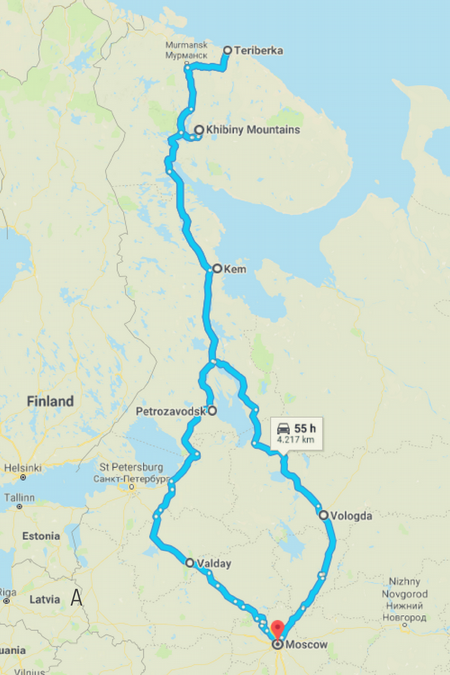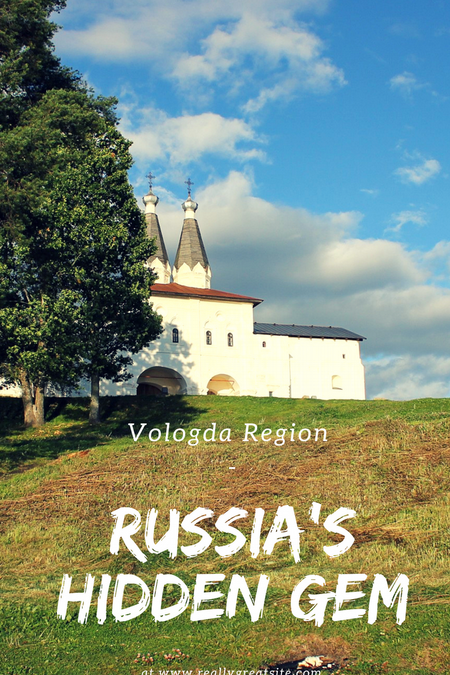...When we left Moscow at the end of August, it was burning hot. The city was glowing. Just 450 km north - or a one-night-long drive away - the temperature fell to 12 degrees and the sky was rainy and grey. But with every degree off the thermostat, the landscape around was getting more and more beautiful. The burned yellowish meadows turned to ankle-high wet green grass. Deep dark forests, lakes, swamps and seldom villages built of wood appeared behind the car's window.
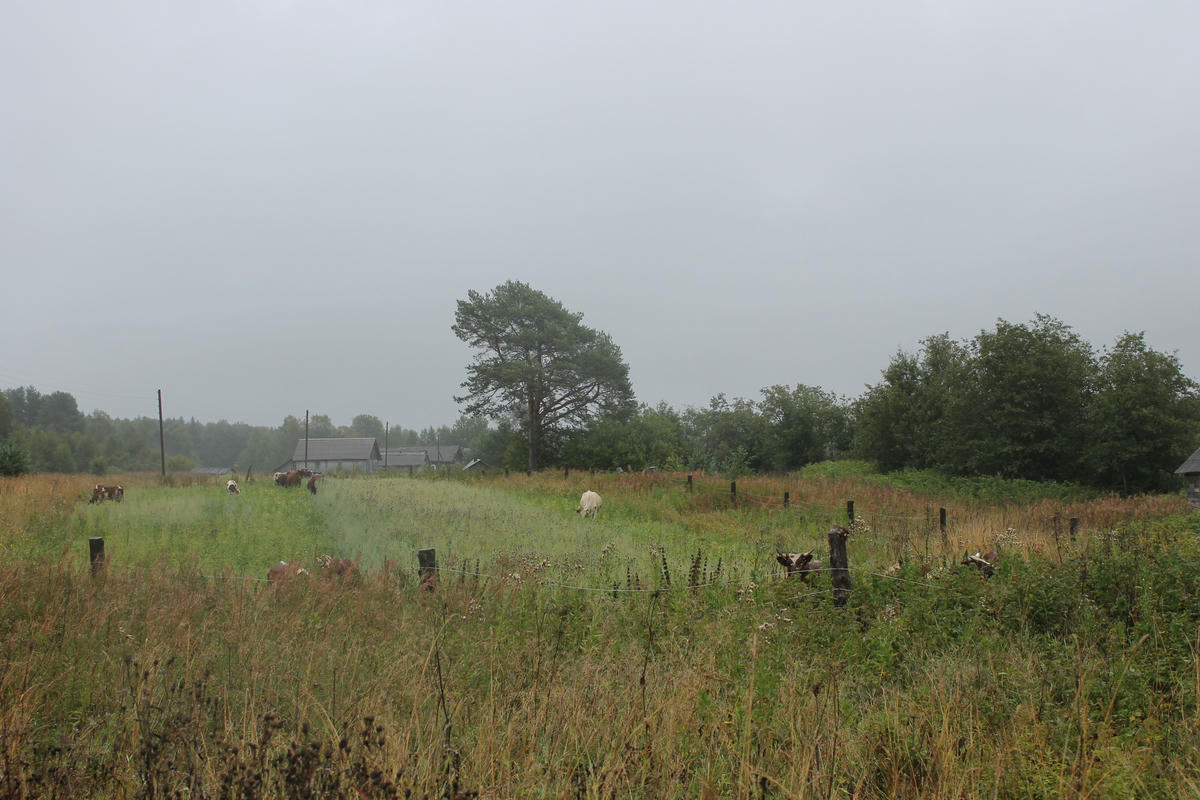
You may go to the Vologda region just to spend time in nature - the woods and villages in the middle part of Russia are nowhere as spectacular. But apart from that, this part of Russia has a lot to offer in terms of cultural heritage: you really have to put Ferapontov and Kirillo-Belozersky Monasteries on your itinerary.
Ferapontov Monastery Idyllically located on the lakeshore, this old monastery boasts stunning Medieval architecture and some of the best fresco paintings of the Russian Renaissance accomplished by Dionisius in the beginning of the 16th century.
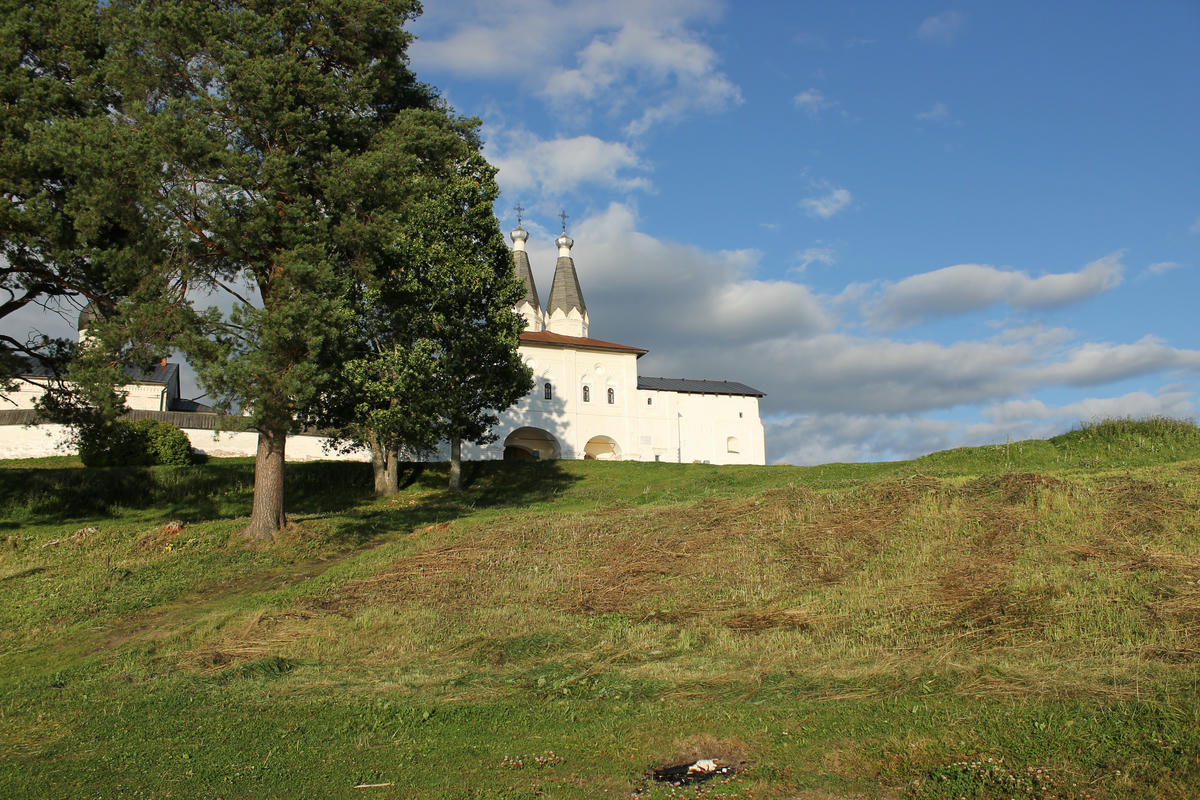
Three icon painters of the Moscow State - Dionisius, Feofan Grek and Andrei Rublev - are among the most important and influential artists of the Eastern Europe of their time. You may have heard of the latter from the classical movie by Andrey Tarkovsky. Unfortunately, only a few of their works remain intact up to this day, so a chance to see the frescos of Dionisius is really worth the trip.
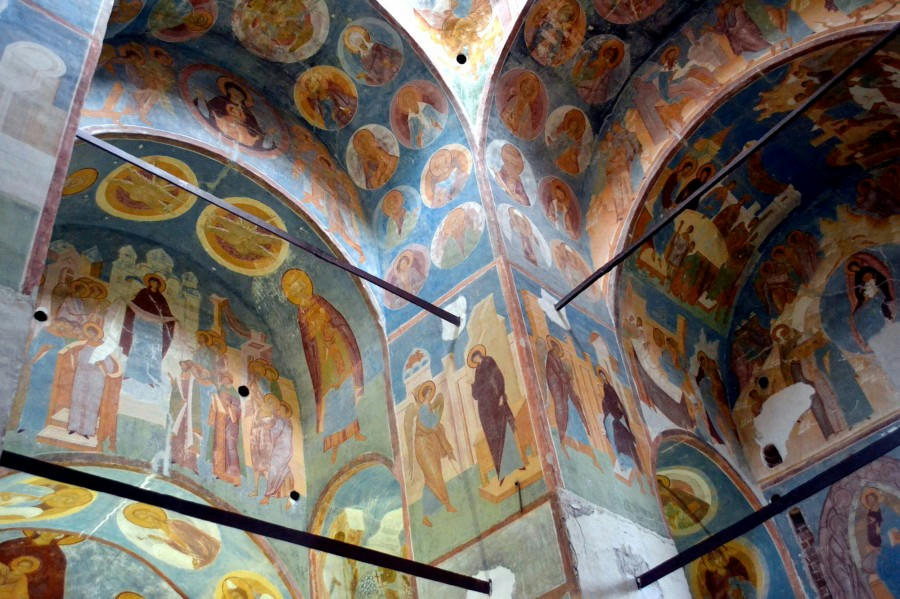
Andrei Rublev by Tarkovsky (1966) Want to learn more about icons of the Eastern Orthodox Church?
Ferapontov Monastery is a UNESCO World Heritage Site - but still, the place is far from the beaten track and not quite crowded. We absolutely love and recommend it!
Kirillo-Belozersky Monastery Close to Feofanov, there is the Kirillo-Belozersky Monastery. It is quite striking with its size and fortress-like design. It used to be the biggest and the strongest monastery in the North of Russia for a long time. Probably, it is the biggest monastery that I 've ever seen. And how huge must it have appeared in the 17th century when the fortress was built! It used to be the second largest landlord of the Moscow Principality, the notorious Prince Ivan the Terrible favoured this monastery over the others and used to have his own cell there.
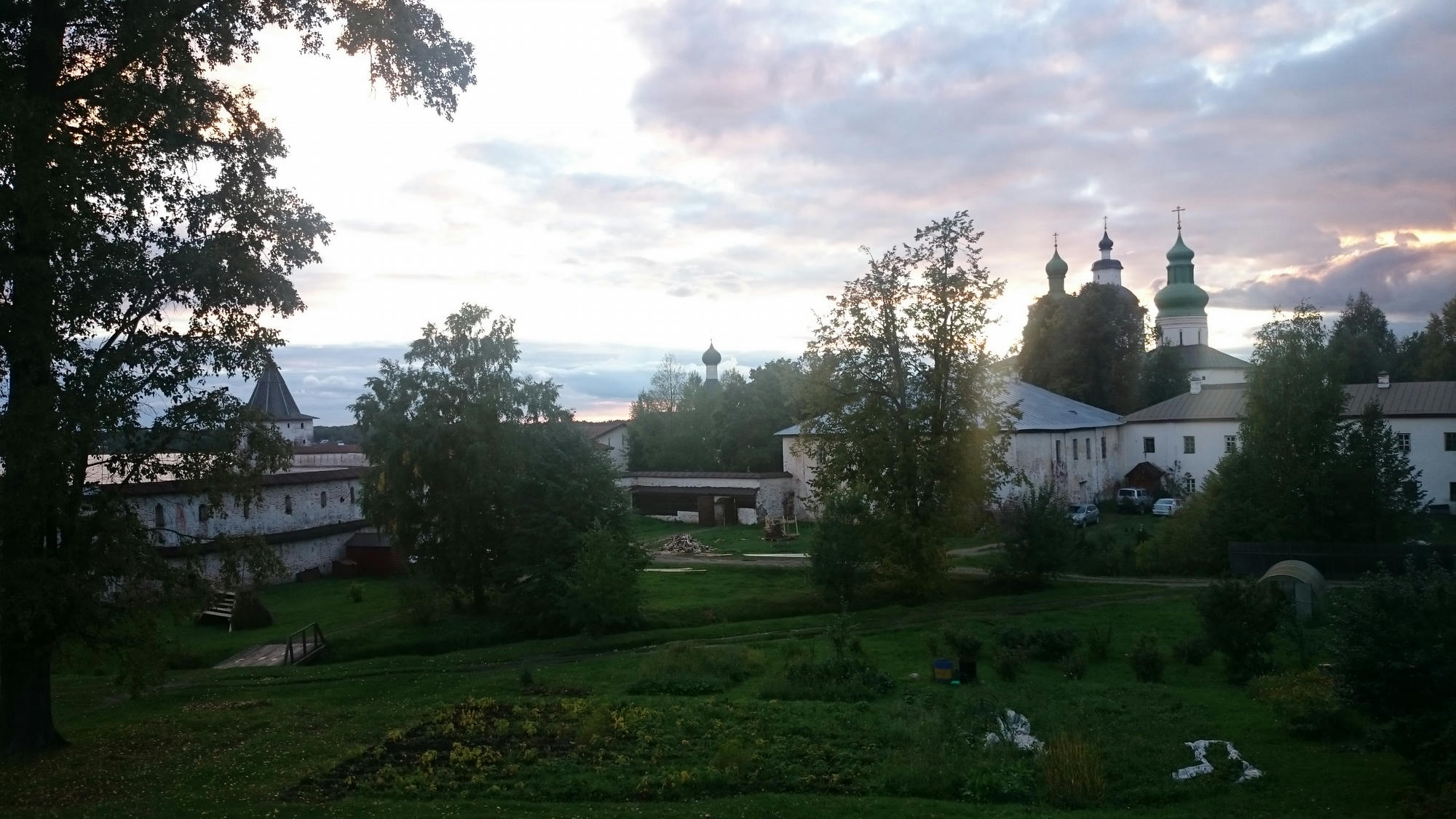
However, it started out pretty small when the monk Kirill (or Cyril) dug a cave for himself on this same place in 1397. Soon he was joined by other monks who flew from civilization and moved north to this unhospitable harsh county. By the way, Ferapontov Monastery was founded by the monk Ferapont - a disciple of Kirill - just a year later, in 1398.
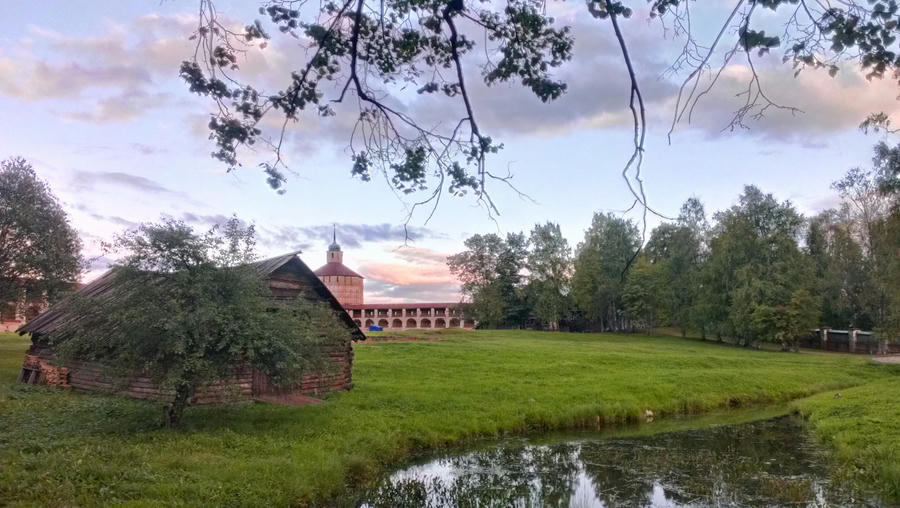
Now, one may roam hours along the massive (almost 800m long and 7m thick) and picturesque fortress walls, enjoy the view over the nearby lake, take a look at the churches - it is easy to spend an entire day at this place.
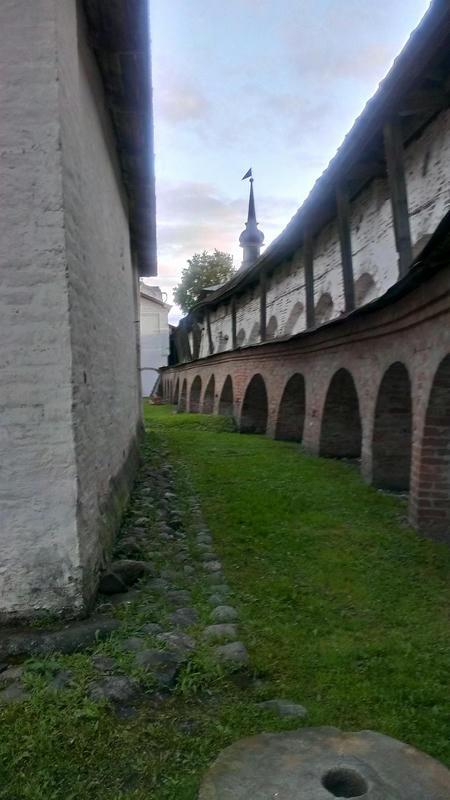
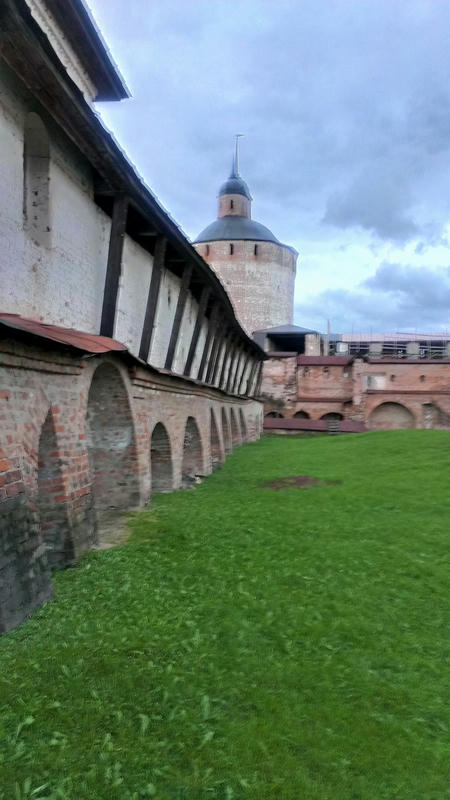
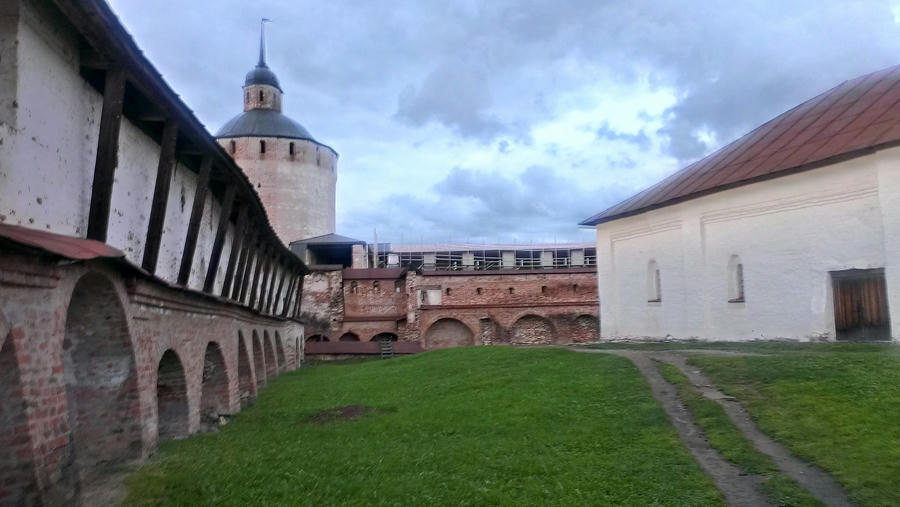
During the Soviet times, Kirillo-Belozersky monastery was turned into a museum. And since 1998 the monastery is revived. The coexistance of a museum and a monastery in one space is a big issue now for many similar places in Russia.
A church under the Water in Krokhino And another special church that left a long-lasting impression upon us is situated not just by, but right inside of a lake: It was built between 1788 and 1820 and because of the construction of a hydroelectric station was partly flooded and keeps falling apart...
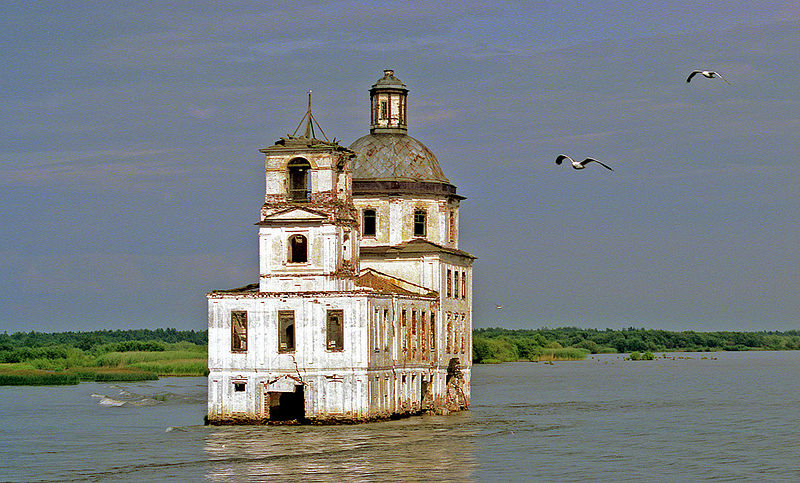
Vologda Vologda has some old churches, dating back to the 16 - 18th centuries. We also enjoyed strolling through the town´s main market, where we got a wonderful herbal tea and tried some marinated specialities of this part of Russia. However, we liked the town slightly less than its surroundings. The remnants of the 70ieth Soviet architectural past has the capacity to remind of all the ugliness that exists in the world - one may forget about after some time spent outdoors.
For us, a stop in Vologda was essential: On our way to the Arctc Circle, we had to exchange money, get some food and out of all the towns in the North of Russia Vologda is the most beautiful and one of the oldest.
How to get there: Even though going there by car seems to be the best option in our opinion, you may definitely take a night train to Vologda from Moscow. It would allow you to save a day of driving. The town Kirillov close to Kirillo-Belozersky Monastery and the village Ferapontovo are connected with Vologda by a bus service. Here are the google maps coordinates of the church in Krochino: 60.060661, 38.039123
Where to stay: The only negative part of this trip was that we didn´t discover any nice hotels that we could recommend. But hotels are generally rundown in this part of Russia. Before going to Vologda, I did some research on accommodations on the Russian forums on the internet. I found out that it was possible to rent a house in Feofanovo from the locals once you are there, but our attempts to find one on the spot didn´t yield any results.
In Kirillovo, a town near the Kirillo-Belozersky Monastery there were a couple of hotels but they were so run down that it seemed illogical to pay money for the misfortune of sleeping there. We had to choose out of several bad options and finally decided to sleep in our car. Our improvised campsite was not that bad at all: We drove to the opposite shore of the lake in Kirillo-Belosersky Monastery and found a desolate spot with a great view!
